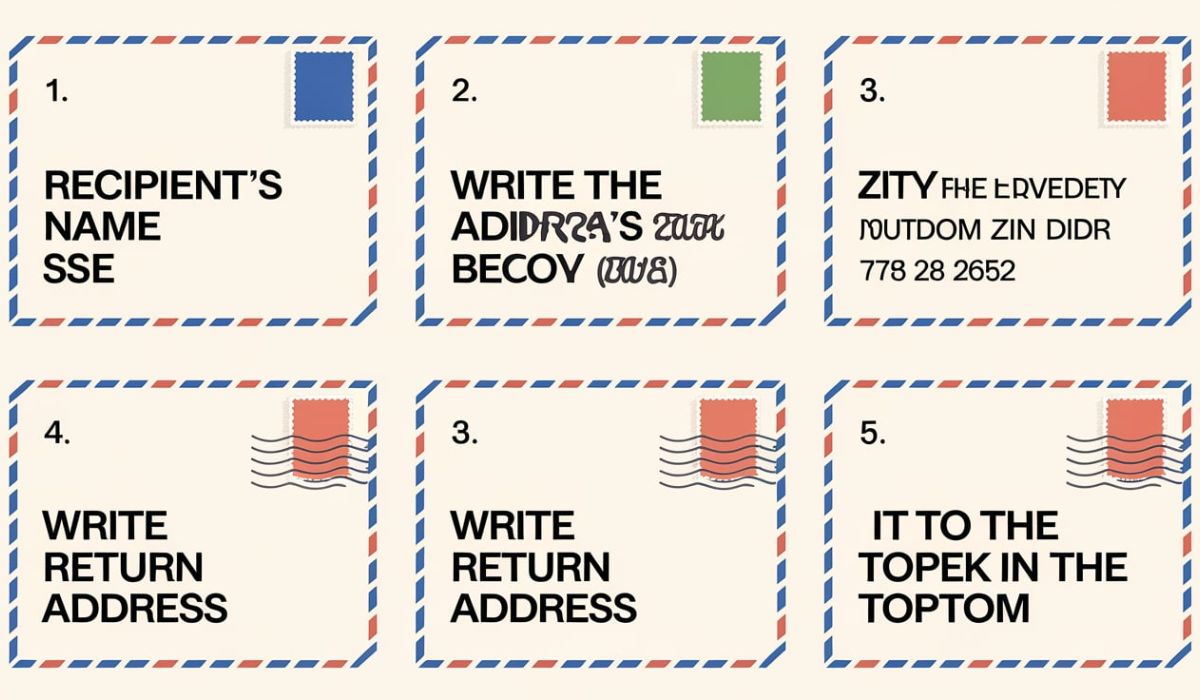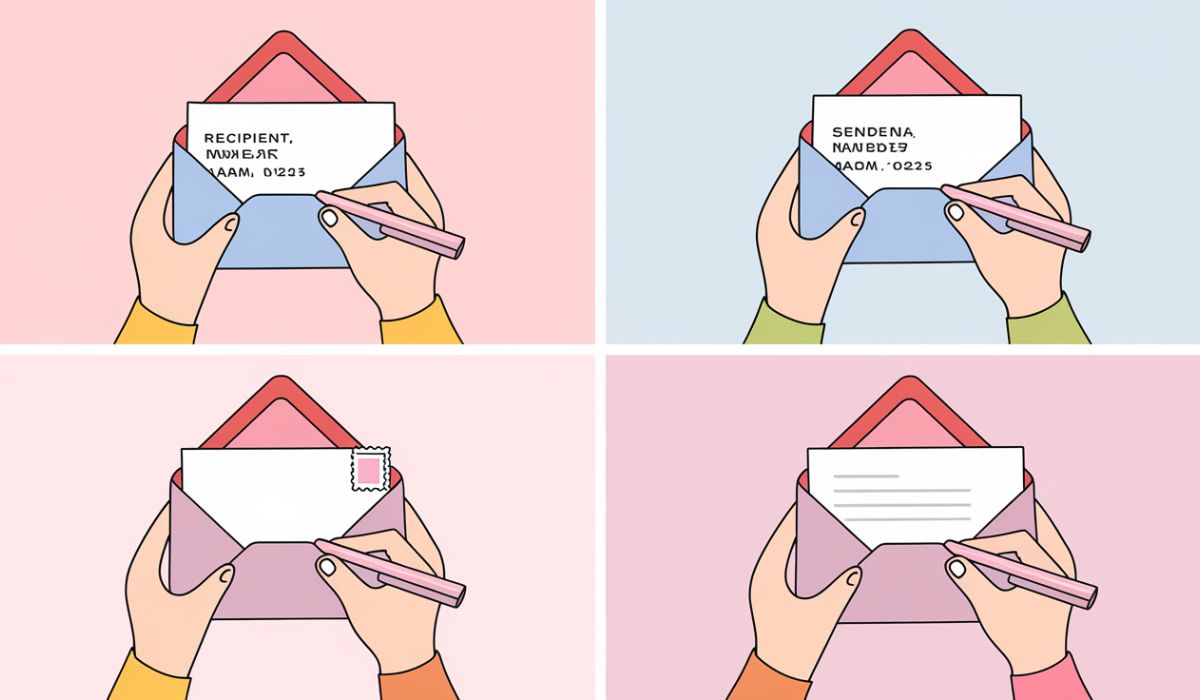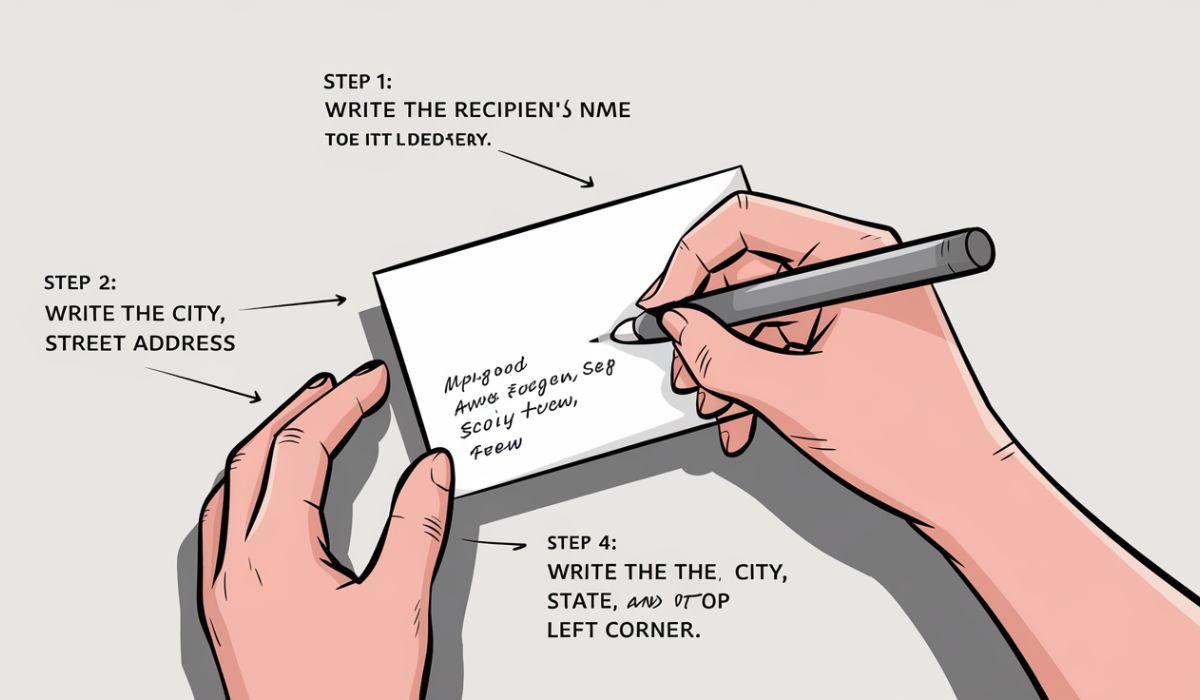Sending mail might seem like an old-fashioned practice in today’s digital world, but nothing compares to the personal touch of a handwritten letter or a formal invitation delivered through the mail. Whether you’re sending a birthday card, a thank-you note, or an official business letter, knowing how to address an envelope correctly is key to ensuring that your message reaches its recipient in a professional and timely manner.
In this guide, we’ll walk you through everything you need to know about addressing an envelope—from the basics to more specific situations. So, let’s get started!
Why It’s Important to Address an Envelope Properly

When you send a letter or card, how you address an envelope is crucial. A properly addressed envelope ensures that your mail reaches the right person at the right location. It prevents delays, mix-ups, or even mail being returned. Just like sending a gift with a tag, a correctly addressed envelope is the first step in delivering your message with care and professionalism.
Think of it as laying the foundation of a house—the address is the structure that keeps your letter grounded and directed toward its destination.
Basic Structure of an Envelope Address
Before diving into specific scenarios, let’s break down the basic structure of an envelope address. An envelope typically has two main parts: the recipient’s address and the return address.
-
Recipient’s Address: This is the address of the person or business you’re sending the letter to.
- First Line: Name of the recipient (e.g., Mr. John Doe)
- Second Line: Street address (e.g., 123 Main Street)
- Third Line: City, state, and zip code (e.g., Springfield, IL 62701)
-
Return Address: Your own address, placed in the top left corner of the envelope.
- First Line: Your name
- Second Line: Your street address
- Third Line: City, state, and zip code
How to Address an Envelope to a Single Person
Addressing an envelope to an individual is the most straightforward. To address it correctly, you will follow the basic structure:
- Name: Make sure to write the recipient’s name clearly, with their title (if applicable) such as Mr., Ms., Dr., etc.
- Street Address: Ensure the street address is written correctly, including apartment numbers or suite numbers if necessary.
- City, State, Zip Code: Double-check the city, state, and zip code to avoid any confusion.
How to Address an Envelope to Multiple People

When addressing an envelope to multiple people, you have a couple of options depending on the formality of the situation. You can list both names on the same line or split them across two lines. If you’re addressing a married couple, for example
For more formal situations, like business correspondence, it’s best to separate the names and use proper titles.
How to Address an Envelope for a Business or Organization
When addressing an envelope to a company, organization, or business, you should include the specific person’s name (if possible) or the department in charge. Here’s how you can structure it:
If you’re unsure of the recipient’s department, it’s okay to just use the company name, but make sure you have enough details for the mail to get to the correct department.
Proper Addressing for International Mail
International mail comes with some additional rules. When addressing an envelope to an international address, it’s essential to:
- Write the recipient’s country name in full (e.g., “Canada” instead of “CA”).
- Include the international postal code (if applicable).
- Use the correct format for the destination country. Each country may have slightly different address formats.
The Return Address: What It Is and Why It Matters

The return address is placed in the top left corner of the envelope. This serves as a safety net. If the recipient’s address is incorrect or the mail cannot be delivered, the postal service will return the item to the sender’s address.
The return address should include:
- Your name
- Your street address
- Your city, state, and zip code
How to Address an Envelope for Formal Invitations
When sending formal invitations, the presentation matters. Address the envelope using formal titles (e.g., “Dr.” or “Ms.”) and make sure the recipient’s name is spelled correctly. If the invitation is for a couple, include both names:
Addressing an Envelope for Wedding Invitations
Wedding invitations are a special case of formal invitations, so addressing the envelope correctly adds a touch of elegance. Here are some tips for wedding envelope addressing:
- Write out the full name of each guest (no abbreviations).
- Use formal titles such as “Mr.,” “Mrs.,” and “Dr.”
- Consider addressing both individuals if the invite is for a couple.
How to Address an Envelope for a Package or Parcel
When sending a larger package or parcel, the process of addressing the envelope is similar, but it’s essential to write clearly, especially for larger items that might be handled by multiple people in transit.
Make sure the address is easy to read and all labels are properly affixed. If needed, include instructions such as “Fragile” or “This Side Up.”
What to Do If You Don’t Know the Recipient’s Exact Address
If you don’t know the recipient’s exact address, try to find it through:
- Online address lookup tools
- Calling the recipient to ask for their correct address
- Using a general address (such as the company’s headquarters) if you don’t have the exact department’s address
How to Write an Address by Hand vs. Using Printed Labels
When addressing an envelope by hand, use neat handwriting to ensure readability. Alternatively, printed labels are a great option if you need to send multiple letters or packages, and they look more polished.
If you’re using printed labels, make sure the label is aligned properly on the envelope to avoid any misplacement.
The Role of Postage in Envelope Addressing
Once the envelope is addressed, don’t forget the postage. The correct postage ensures your letter reaches its destination. Weigh the envelope to determine the correct postage rate based on size, weight, and destination.
Common Mistakes to Avoid When Addressing an Envelope
- Misspelled names – Double-check the spelling of the recipient’s name.
- Wrong or incomplete address – Verify the address before mailing.
- Unreadable handwriting – Ensure the address is legible.
- Not using the correct postage – Ensure sufficient postage is applied.
Tips for a Neat and Professional Envelope Address
- Write addresses using all capital letters for clarity.
- Keep the text straight and aligned.
- Use a clean, crisp envelope without any wrinkles or smudges.
FAQs
Can I address an envelope to “The Smith Family”?
Yes, if you’re sending a casual letter or card to a family, you can use the family name as the recipient.
Should I use “Mr.” or “Mr & Mrs.” when addressing a couple?
It depends on formality. “Mr. and Mrs.” is more formal, but “Mr. and Mrs. John Smith” is also appropriate.
What if I don’t know a person’s title?
If you’re unsure of a title, it’s safest to use a neutral greeting like “Dear [Full Name].”
Can I send international mail with just the city and country name?
No, you need to include the full address, including postal codes and the recipient’s full name.
How can I make sure my mail is delivered on time?
Double-check the address for accuracy, use proper postage, and ensure that the envelope is securely sealed.
for more visit: rankshort
